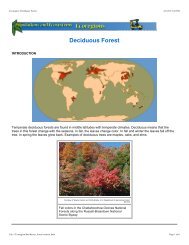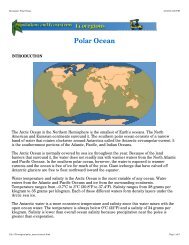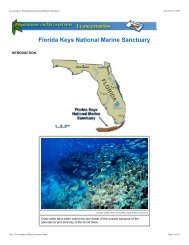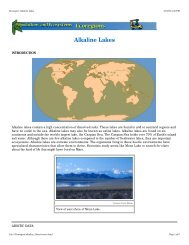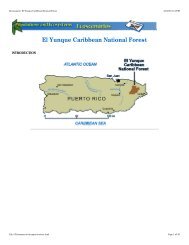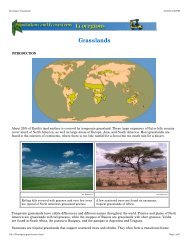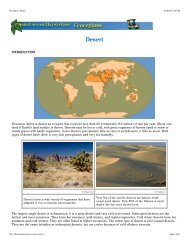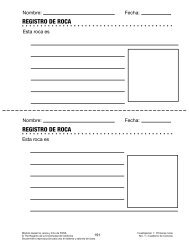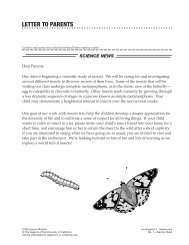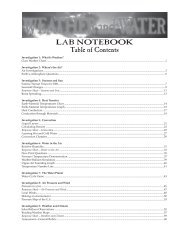Ecoscenarios Combined - FOSSweb
Ecoscenarios Combined - FOSSweb
Ecoscenarios Combined - FOSSweb
Create successful ePaper yourself
Turn your PDF publications into a flip-book with our unique Google optimized e-Paper software.
Ecoscenario: Florida Keys National Marine Sanctuary<br />
4/16/03 3:17 PM<br />
Keys National Marine Sanctuary on November 15, 1990.<br />
The reefs of Florida Keys National Marine Sanctuary are biologically diverse and productive. Coral reefs are called<br />
the rain forests of the ocean because of the diversity of organisms found there. The core of a reef is composed of<br />
the calcareous skeleton of the coral polyp. The area around the the colonial corals provides habitat for calcareous<br />
algae, fish, worms, and other marine organisms. The coral reefs are the dominant feature here. The Florida Keys<br />
also have beds of turtle grass and mangrove forests. All these communities provide important habitat for marine fish<br />
and other animals.<br />
ABIOTIC DATA<br />
Florida Keys National Marine Sanctuary is a tropical ocean with a tropical maritime climate. There are two long<br />
seasons. May to October is the wet season, with an average of 14 centimeters (5.5 inches) of rain each month.<br />
Average temperatures during the wet season are hot, around 27°C (80°F), and average relative humidity is 75%. The<br />
water temperature during the summer months also averages 27°C (80°F).<br />
The dry season is November to April. While there are occasional cold fronts and rain, only about 5 centimeters (2<br />
inches) of precipitation falls each month. Cooler temperatures range between 20 and 24°C (68 and 75°F).<br />
file:///Ecoscenario/flakeys/content.html<br />
Page 3 of 18



